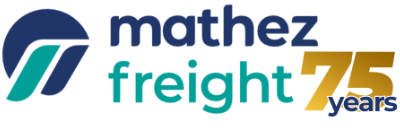The VAT reverse charge mechanism for import VAT becomes the standard on January 1st 2022: this means that paying VAT on imports will now be automatic and mandatory for French and foreign importers. Foreign companies conducting import operations in France must therefore have registered for VAT and obtained a VAT number, or their goods will be blocked at the borders of the European Union Customs Territory. Who is concerned, what are the possible solutions or procedures to apply? Here is what you need to know.

Quick Tips for Logistics Professionals
- French importers, instead of paying VAT to their Customs Broker who used to advance it to Customs, will now declare their VAT on their monthly VAT declaration, and recover it the same month: principle of reverse charge for companies recovering VAT.
- Foreign companies conducting import operations in France must be registered for VAT, or their goods will be blocked at the borders of the European Union Customs Territory.
- Foreign sellers can, in some cases, avoid the pure DDP incoterm, so that their buyer, who holds a VAT number, takes care of the VAT payment. In some situations, however, foreign companies cannot avoid the DDP incoterm or the status of importer in France. They will need to register for VAT in France in order to use the VAT reverse chargemechanism A simple and fast procedure with our sister company EASYTAX, specialist in VAT fiscal representation.
Who is affected by the 2022 VAT reform for imports?
Automatic VAT reverse charge mechanism on imports for French importing companies
The VAT reverse charge mechanism on imports will be mandatory and automatic for any company registered for VAT in France. No special steps will be necessary : the changeover will take place automatically on 1st January 2022.
French traders who use the VAT-free purchase quota system for their imports will be able to continue to use their AI2 authorisation, but will automatically switch to the VAT reverse charge mechanism on imports on 1st January 2022.
Traders who wish to continue to benefit from their AI2 will have to mention it to their Registered Customs Representative in advance, before they are automatically switched over to the VAT reverse charge mechanism. Having the VAT reverse charge mechanism on imports as the standard should, definitively decrease use of the AI2, as there will no longer be any reason to use it for imports.
The VAT reverse charge mechanism for imports requires foreign companies importing goods into France to register for VAT and obtain a VAT number.
All foreign companies that carry out or wish to carry out import operationsin France are liable for VAT, regardless of their country of establishment or VAT scheme. As such, they must have registered for VAT in France and have a valid French VAT number.
Are you sending goods under the DDP incoterm in France? Don’t risk blockages at customs !
With the new import reverse charge regulation, a German or American company selling in France under the DDP incoterm must be identified for VAT in France.
Alternatives to the DDP incoterm:
Faced with this new obligation, the first solution is not to sell using a pure DDP:
- Make sure the buyer accepts to pay VAT and take care of the reverse charge mechanisme: you may then remain in DDP but specify“DDP excluding VAT place of delivery”.
- Agree on another Incoterm with your buyer, who can use MATHEZ FREIGHT customs services to clear the goods. You’ll then be able to reverse charge the import VAT without any difficulty, as long as you already have a French VAT number.
Situations for which the DDP incoterm remains appropriate:
The DDP incoterm remains appropriate for imports of samples, equipment under warranty, for marketing authorization issues, or simply because the buyer does not want to be involved in the customs clearance operation.
Other situations that put you, as a foreign seller in the position of importer in France:
The new reverse charge mechanism also applies to foreign companies importing in the following situations
- Storing in France imported goods.
- Cross trade.
- Releasing imported good for use at exhibitions.
- Please take a look at examples on Tax Mag,an initiative of our sister company Easytax.
Tax representation solution for foreign importers in DDP:
You sell goods in France and your buyer does not wish to become an importer in your place: before the goods leave, make sure you identify yourself for VAT in France. A simple and fast procedure with our sister company EASYTAX, specialist in VAT tax representation.
Special cases for individuals
Individuals will continue to pay import VAT at the time of customs clearance, despite the reverse charge reform.
How should companies adapt their procedures to the generalisation of reverse charge mechanism for imports in France in 2022?
What our experts have to say
The transfer to the VAT reverse charge mechanism on imports as standard should be imperceptible to businesses that have already opted to use this mechanism. For other French companies, this may require some internal adjustment for implementation as tasks and skills will need to be transferred to accounting departments.
Foreign companies not registered for French VAT and carrying out import operations in France are likely to encounter more difficulties, particularly because there is a risk of various entities not being prepared:
- The DGFIP services in terms of assigning VAT numbers
- Operators who did not anticipate this regulatory shift.
Some risk situations will require special attention:
- Triangular purchase operations(e.g. FOB) – resale (DDP) by a foreign operator giving rise to an import into France,
- Imports for trade fairs carried out by foreign operators,
- Stock transfers in France by foreign companies for resale to French e-commerce platforms or European individuals.
Formalities to be carried out with the DGFIP
Responsibility for collecting VAT in France has been transferred from the DGDDI (General Directorate for Customs) to theDGFIP (General Directorate for Taxes).
Companies liable for import VAT will have to include their French VAT number on their import customs declarations.
- For French importers who have already opted for the VAT reverse charge scheme there are no notable changes.
- French importers who have not yet been eligible or who have not wished to take advantage of the system until now will have to transfer internal responsibility to accounts departments, who will receive their CA3 partially pre-filled from now on and will have to check the VAT base, and archive the customs documents.
- Foreign operators who are not yet registered for VAT in France or who have invalid French VAT numbers may find themselves unable to import into France from 1st January 2022 if they do not have a VAT number. The easiest way for them is to appoint a VAT fiscal representative.
“Person liable for VAT in France” document code 1008, and enter the VAT number of the person liable for VAT in box 44 of the customs declaration.
Important points:
- VAT adjustment will now be carried out directly on the CA3 form with the DGFIP. Make sure you are speaking to the right person, as although any corrections to or invalidations of your returns remain the responsibility of your Registered Customs Representative, VAT adjustment is handled directly on the CA3 form.
- The management of suspensive tax schemes (RFS) has also been transferred to the DGFIP.
- The customs authorities, on the other hand, remain responsible for checking the VAT assessment bases.
Reminder: how to determine the VAT base?
Although the DGFIP will be responsible for the collection of import VAT, it is still the DGDDI that determines and controls the import VAT base. Companies must determine this base correctly without mixing up:
- the customs duty base, also known as the Customs Value on Import (CVI), based on the transaction value of the goods (the “invoice value“) delivered CIP/CIF (goods, transport and insurance included) at the 1stpoint of entry into EU Customs territory.
- The import VAT base also called the tax value, which is the sum of:
Customs import value + Customs duties + Anti-dumping duties (ADD), if any + Miscellaneous taxes + Transport to final point of customs destination.
The VAT reverse charge mechanism on import, a new, handy internet service
To help taxpayers check the information that’s pre-filled on the VAT return, the DGDDI is working on a VAT reverse charge mechanism on import website which should be available on the customs.gouv.fr portal in 2023. A hybrid solution will be available from February 14th 2022 to pick up the January data.
Taxpayers will have a dedicated space on the site, accessible through a personal account created on this portal (see the procedure on the Customs website here).
This web service will enable VAT to be traced, return by return, for a given reference period on the basis of entering the SIREN/French Intra-Community VAT number pairing. Taxpayers will have access to a table that can be consulted and downloaded in an editable format.
Reminder: how the VAT reverse charge mechanism on imports has developed
Historically, the import VAT scheme in France meant that importers pay import VAT to the customs authorities at the time of import as part of customs clearance. The importer would then claim a refund from the tax authorities via their monthly VAT return (CA3).
In January 2017, under pressure from international trade operators, the DGDDI (General Directorate for Customs) and DGFIP (General Directorate for Finance) agreed to open the VAT reverse charge mechanism for import VAT to all importing companies by expressly requesting it, provided that they meet a certain number of criteria such as: having a valid French VAT number, being part of the standard VAT scheme, meeting financial solvency and customs probity critera.
This VAT reverse charge mechanism on import allowed importing companies to pay monthly and deduct import VAT over the same period, directly on their CA3 return. In other words, the importer no longer had to pay the import VAT at customs, as this was tracked and entered on the CA3.
Four years later, the results have been so positive that, from January 1st 2022, the French authorities have decided to extend the VAT reverse charge mechanism for imports to all companies subject to French VAT and liable for VAT on their import operations.
Find out more:
- On the MATHEZ FORMATION blog: VAT reverse charge on imports & CA3 returns in 2022 (in French)
- On the EASYTAX Tax Mag: 2022 VAT reverse charge mechanism on imports: obtaining a French VAT number becomes mandatory for importers



